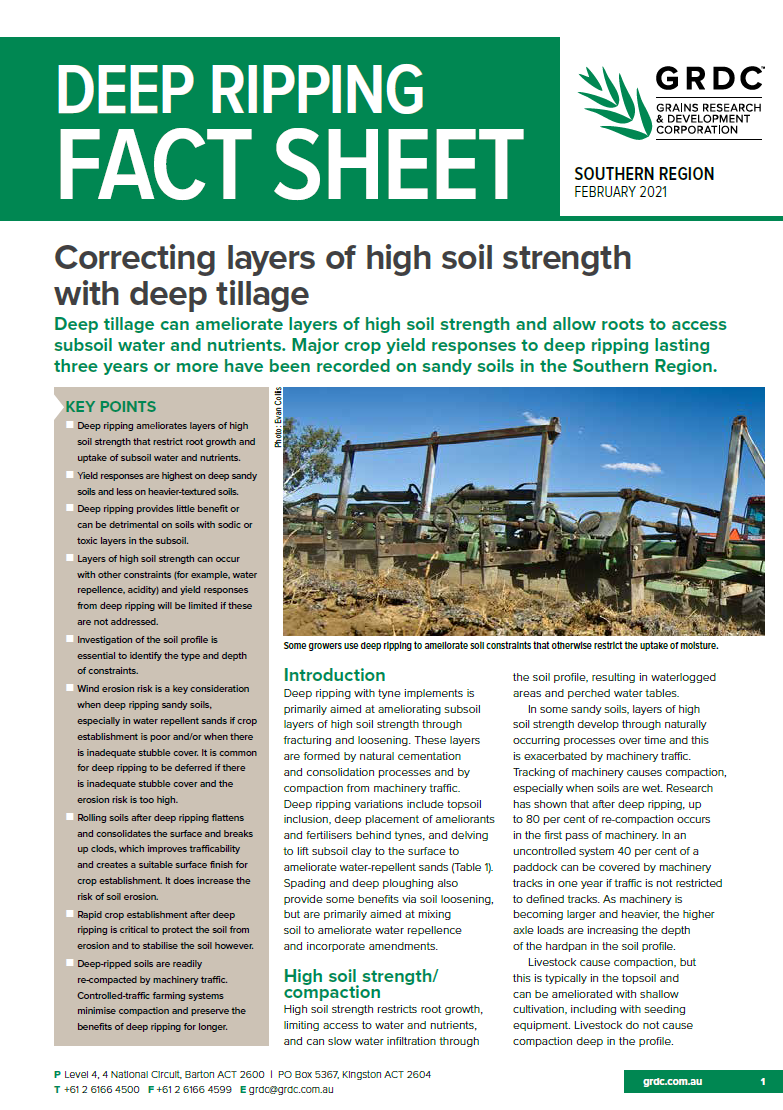Correcting layers of high soil strength with deep tillage - southern region
Correcting layers of high soil strength with deep tillage - southern region
Published: 19 Feb 2021
Deep tillage can ameliorate layers of high soil strength and allow roots to access subsoil water and nutrients. Major crop yield responses to deep ripping lasting three years or more have been recorded on sandy soils in the Southern Region.
Key points
- Deep ripping ameliorates layers of high soil strength that restrict root growth and uptake of subsoil water and nutrients.
- Yield responses are highest on deep sandy soils and less on heavier-textured soils.
- Deep ripping provides little benefit or can be detrimental on soils with sodic or toxic layers in the subsoil.
- Layers of high soil strength can occur with other constraints (for example, water repellence, acidity) and yield responses from deep ripping will be limited if these are not addressed.
- Investigation of the soil profile is essential to identify the type and depth of constraints.
- Wind erosion risk is a key consideration when deep ripping sandy soils, especially in water repellent sands if crop establishment is poor and/or when there is inadequate stubble cover. It is common for deep ripping to be deferred if there is inadequate stubble cover and the erosion risk is too high.
- Rolling soils after deep ripping flattens and consolidates the surface and breaks up clods, which improves trafficability and creates a suitable surface finish for crop establishment. It does increase the risk of soil erosion.
- Rapid crop establishment after deep ripping is critical to protect the soil from erosion and to stabilise the soil however.
- Deep-ripped soils are readily re-compacted by machinery traffic. Controlled-traffic farming systems minimise compaction and preserve the
benefits of deep ripping for longer.
Download PDF
Region: South

